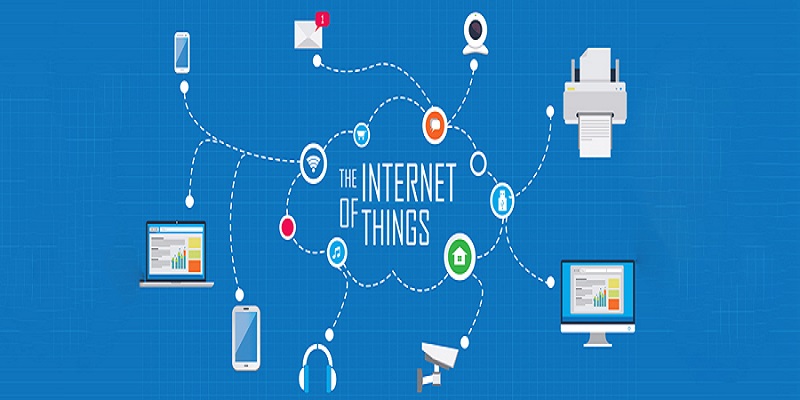To associate with Artificial Intelligence (AI) supporters such as Amazon’s Alexa, Siri, and Microsoft’s Cortana, Voice Bots are also growing in popularity. This is due to voice bots letting customers connect with these assistants. Considering that we are in the year 2024, industries need to identify and profit from the disruptive innovations that will transform the landscape of marketing and branding.
Future of NLP and an Introduction to Voice Bots
Voice bots have arisen as a breakthrough technology in recent centuries, and they are largely responsible for the revolution of how humans communicate with machines. Such voice bots have gotten progressively sophisticated as a result of improvements in Natural Language Processing (NLP), which have enabled them to understand and react to human speech with an impressive phase of precision.
Voice bots, which are driven by NLP, have appeared as a changing force in a diversity of different sectors. The method in which firms involve their consumers has been changed by these intelligent conversational agents, which have improved competence and improved user experiences via all of these improvements.
A voice bot is an informal explanation that makes use of AI and natural language comprehension (NLU) to assist in the interpretation of the denotation and purpose of vocalized instructions. When you use a voice bot to detect and react to humanoid speech. The voice assistants can be applied in customer care, marketing messages, and doing product searches. There are a wide variety of distinctive varieties of speech bots, each of which has a unique collection of skills and characteristics.
Understand the Differences: Voice Bot and Chat Bot
Chatbots are capable of performing a broad diversity of assignments. Conversely, voice bots have precise responsibilities. Bots that are built to manage certain jobs. They have been made for handling particular duties. Conversational AI Development includes an extensive variety of apps, such as Voice Bots and Chat Bots. The fact that they are both utilized to involve individuals is a similarity between them; yet, how they work is different.
Voice bots today are gaining popularity over chatbots because they offer a more human-like interface and are quite well-organized in terms of communication. When the user is feeling difficulties, for instance, it is larger to be convenient to describe the issue verbally rather than typing it down. People of a younger age or those who are older and may not be as accustomed to texting would benefit from this in particular. About their capabilities, both are in conversation mode, which enables them to understand natural language. Chatbots, alternatively, are dependent on text input, whilst voice bots are dependent on speech recognition.
Some Advantages of Voice Bots

1) Voice bots have proved to be quite useful since their introduction in the field of client support. They provide immediate assistance around the clock, which eliminates the need for human interaction. A simple voice command allows customers to simply ask inquiries, get information about products, and address concerns, all of which may be accomplished. The consumer and the company both benefit from this since it additionally saves time but also guarantees that the replies they get are correct and consistent.
For example, you may save expenditures by removing agents who don’t handle high-volume calls and incorporating a voice bot into your current contact center infrastructure. This will allow you to manage your call center more efficiently. Because of this, agents will no longer be required to take on low-value jobs, which will have the additional effect of increasing their productivity.
2) In the field of healthcare, speech bots have been essential in paving the method for more sophisticated virtual assistants. These bots can give basic medical advice and aid with patient questions, appointment scheduling, medication reminders, and so on. By their capability to know and correctly take care of medical terminology, speech bots make a significant contribution to the enhancement of patient care and the availability of healthcare services.
3) Additionally, uses for speech bots have been discovered in the banking and finance business respectively. They can perform regular chores like questions about balances, money transfers, and bill payments, which frees up human agents to concentrate on interactions that are more complicated and individualized. Voice bots provide clients with the ability to access their financial information and carry out transactions in an uncomplicated manner, both of which are convenient and speedy.
It has become more common to use voice assistants and smart speakers to do tasks such as turning on the radio, dimming the lights, or obtaining information about the weather. However, for them to be cutting-edge, they must find a higher calling, a new application that will break through.
4) Voice bots are also having a huge influence on the e-commerce industry, which is another area where they are being used. These bots can locate items, help clients in making purchases, and monitor the progress of their delivery. Through the incorporation of speech bots into their platforms, companies can provide a purchasing experience that is both smooth and hands-free, hence increasing consumer happiness and loyalty.
Ethical Considerations
When developing chatbots, several ethical factors need to be addressed to guarantee that the software will have a responsible and constructive influence on users as well as on society as a whole. As we hold to the coming future, it is indispensable to discourse the ethical considerations that are among the voice bots, safeguarding where it’s intended and used sensibly to ensure user privacy, safety, and happiness.
Having the correct method, voice bots could transform the way we interrelate with know-how while maintaining ethical standards towards quickly developing scenarios. In the ethical concerns section of your AI, it is of the utmost importance that you claim that you have adhered to this code in every element of your research and that you have done so fully and comprehensively.
1) Openness and Disclosure of Information
A user should be made aware that they are communicating with a natural language processor (NLP) and not a person. Clearly express the capabilities of the chatbot as well as its limits to control the expectations of the users.
2) Confidentiality of Data
The field of natural language processing (NLP) regularly deals with large amounts of textual data, some of which may include confidential information. The information about users must be safeguarded and anonymized, with the proper precautions taking place.
3) Acceptance
Obtaining the user’s informed and unambiguous permission is necessary before the collection and use of user-generated text data.
4) Reduced Bias Through
Audit the chatbot’s replies regularly and eliminate any biases that may be present to avoid the repetition of damaging preconceptions. It is important to eliminate bias during training by using datasets that are varied and representative.
5) Well-being of the User
The well-being and mental health of users should be given priority while designing chatbots. Take care to avoid participating in talks that might be damaging, offensive, or inappropriate.
6) User Empowerment
Give users the option to quickly pause, halt, or regulate the interactions that the chatbot is having with them. Provide users with the ability to customize their experience to their beliefs and interests.
7) Transparency
Sharing information about data sources, training techniques, and model architectures is a great way to increase transparency.
8) Publication
Publication of anything that is created, altered, falsified, or duplicates the work of another individual is not something that should be done. The practice of dividing a single research article into many publications that include study questions, hypotheses, methodologies, findings, and samples that are identical to one another is also deemed unethical. Therefore, a researcher who adheres to ethical norms should attempt to avoid this practice.
Conclusion
When we get to the end of our investigation into the future of NLP and ethical issues in the field of voice robots, it is important to understand the need to maintain a balance. AI voice assistants that are capable of generating text and pictures, as well as transforming them, are all based on an easy command. Industry sectors such as customer service, healthcare, and even personal assistants are all susceptible to being revolutionized by these technologies. Users should be provided with suitable remedies, and they should have a clear process for managing faults or mistakes that may occur via their usage. As we are in 2024, it’s clear that the future of voice bots is bright and seems great.





